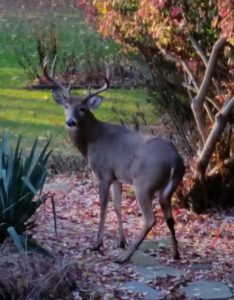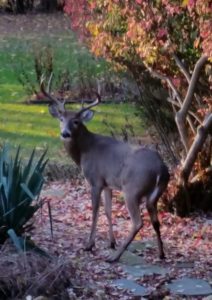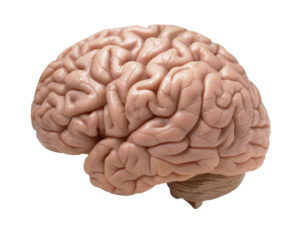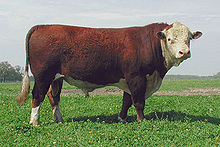 Chronic wasting disease has spread even further among wild game this past year in the US, and for the first time has been detected in Idaho (in 2 mule deer bucks). This is an always-fatal prion disease similar to "mad-cow disease" (bovine spongiform encephalopathy) in cattle. The concern is that this disease will jump to humans, especially in people who eat contaminated meat.
Chronic wasting disease has spread even further among wild game this past year in the US, and for the first time has been detected in Idaho (in 2 mule deer bucks). This is an always-fatal prion disease similar to "mad-cow disease" (bovine spongiform encephalopathy) in cattle. The concern is that this disease will jump to humans, especially in people who eat contaminated meat.
Chronic wasting disease (CWD) should be of concern to all hunters or people who eat wild-caught game (deer, elk, moose, reindeer). No human cases have been detected, but health officials warn people to avoid eating meat from CWD infected animals.
In chronic wasting disease there is a long incubation period, followed by the brain become progressively like a sponge - riddled with holes, along with deterioration in brain function, behavioral changes, and eventually death. A horrible slow death. There are no treatments or vaccines.
It is clear that chronic wasting disease is slowly spreading and infecting wild game across the United States, since it was first detected in wild deer in 1981. It has been found in 27 states and 4 Canadian provinces. This year CWD was found in new regions, far from where it had been detected earlier. It is unknown how this spread is occurring.
For example, it was found in hunter-harvested deer in Felsenthal National Wildlife Refuge (Arkansas), which is 70 miles from where it was earlier detected in Mississippi, and 200 miles from another spot in Arkansas.
Some states have detected quite a few cases of CWD in wild deer over the years (e.g. Minnesota). It has also detected in Finland, Norway, South Korea, and Sweden.
A Chronic Wasting Disease Resource Center monitoring the situation and publishing information and research on its site is CIDRAP (Center for Infectious Disease and Policy). Make sure to look at the Tweets (Twitter).
One scary thing about CWD is that once it gets into the soil, it stays there for years, and high heat, disinfectants, and radiation don't kill it. Yikes! Dr.Zabel at the Colorado State Univ. Prion Research Center suggested a few years ago that controlled burns (fires) of infected fields or areas could eliminate the prions left behind by infected animals (from animal mucus/saliva, urine, and feces, and decaying carcasses) on plants and soil.
An article with advice for how hunters can protect themselves, and a map of where CWD is found in the US.: 5 Ways Hunters Can Prevent Spreading Chronic Wasting Disease
The Centers for Disease Control and Prevention (CDC) has several chronic wasting disease pages, including prevention and transmission.
Here is some of what CIDRAP says on their site about CWD: ...continue reading "Chronic Wasting Disease Now In 27 States"
 Dogs and their ability to detect diseases through their smelling abilities could be important in efforts to control the spread of the prion disease called chronic wasting disease (CWD). Different diseases, including CWD, have characteristic odors or scents.
Dogs and their ability to detect diseases through their smelling abilities could be important in efforts to control the spread of the prion disease called chronic wasting disease (CWD). Different diseases, including CWD, have characteristic odors or scents.
 One topic of concern is chronic wasting disease and its slow spread throughout the US and Canada. Now found in 30
One topic of concern is chronic wasting disease and its slow spread throughout the US and Canada. Now found in 30  The United States has a growing problem. The number of cases of the always fatal Chronic Wasting Disease (CWD) is steadily spreading among wild game (elk and deer) and has now been found in 30 states. In
The United States has a growing problem. The number of cases of the always fatal Chronic Wasting Disease (CWD) is steadily spreading among wild game (elk and deer) and has now been found in 30 states. In  Symptoms of the disease: In chronic wasting disease there is a long incubation period, followed by the brain become progressively like a sponge - riddled with holes, along with deterioration in brain function, behavioral changes, and eventually death. A horrible slow death. There are no treatments or vaccines.
Symptoms of the disease: In chronic wasting disease there is a long incubation period, followed by the brain become progressively like a sponge - riddled with holes, along with deterioration in brain function, behavioral changes, and eventually death. A horrible slow death. There are no treatments or vaccines. After reading the
After reading the